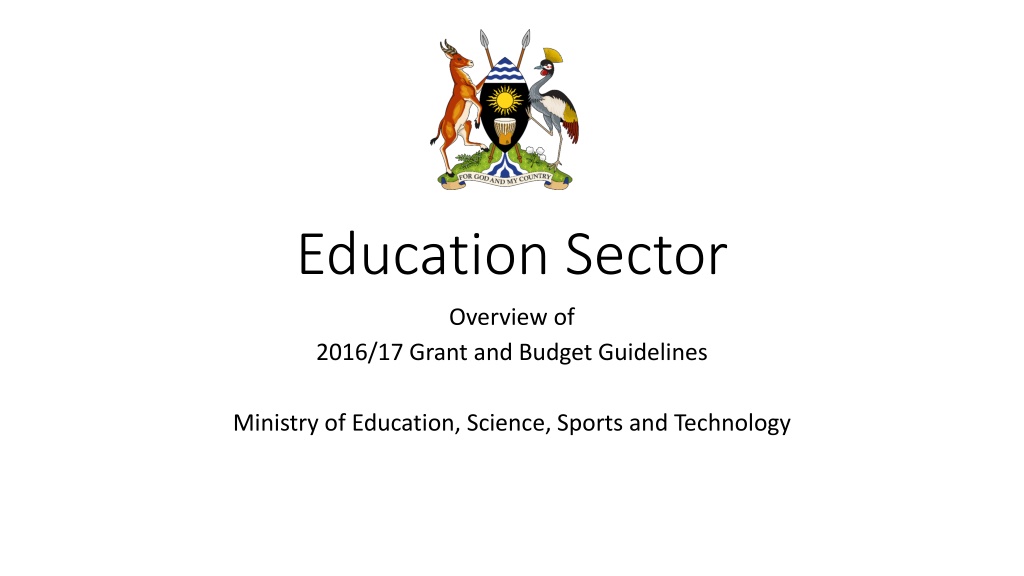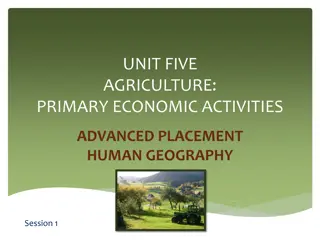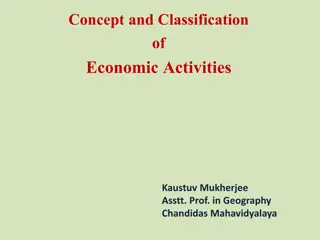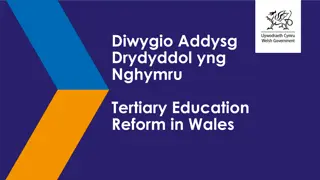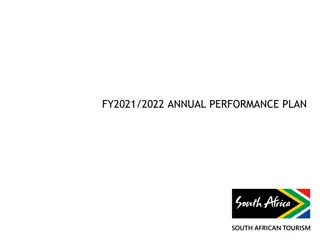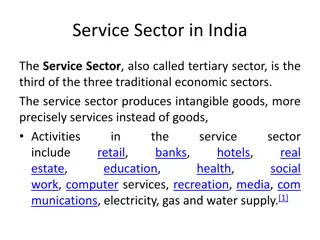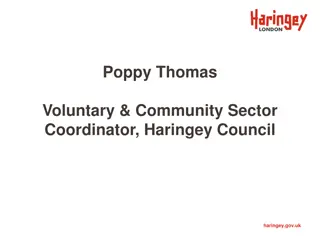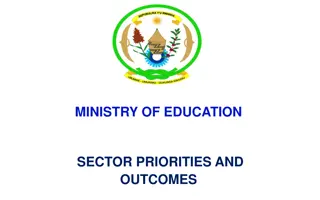Education Sector
Ministry of Education, Science, Sports, and Technology in Uganda focuses on equitable access to quality education, efficiency in service delivery, and skill expansion beyond primary levels. The sector outlines policy priorities, sector objectives, allocation formulae, and key variables for budget requirements.
Download Presentation

Please find below an Image/Link to download the presentation.
The content on the website is provided AS IS for your information and personal use only. It may not be sold, licensed, or shared on other websites without obtaining consent from the author.If you encounter any issues during the download, it is possible that the publisher has removed the file from their server.
You are allowed to download the files provided on this website for personal or commercial use, subject to the condition that they are used lawfully. All files are the property of their respective owners.
The content on the website is provided AS IS for your information and personal use only. It may not be sold, licensed, or shared on other websites without obtaining consent from the author.
E N D
Presentation Transcript
Education Sector Overview of 2016/17 Grant and Budget Guidelines Ministry of Education, Science, Sports and Technology
1. Sector Objectives 2. Structure and Purpose of Sector Transfers 3. Allocation Formulae 4. Budget Requirements 5. Service Delivery Units / etc 6. Other Sectoral Issues 2
Sector Policy Priorities The overall sector objective is to provide for, support, guide, coordinate, regulate and promote quality in delivery of Education, Science, Technology and Sports to all persons in Uganda for national integration, individual and national development. The National Development Plan (NDP) II indicates that the Education and Sports sector priorities over the next five years are aimed at: Achieve equitable access to relevant and quality education and training; Ensure delivery of relevant and quality education and training. Enhance efficiency and effectiveness of education and sports service delivery at all levels. The NDP II, aware of the key sector challenges, specifies that the sector will focus on introduction of ECD programmes and improvement of quality, equity, retention, relevance and efficiency in basic education. In addition, access to skills in the education system will be expanded particularly beyond the primary level. The sector will also prioritize the enhancement of the inspection function. 3
Structure and Purpose of Sector Transfers Grant Purpose Wage Conditional Grant o/w Pre Primary and Primary o/w Secondary Education o/w Skills Development Non-Wage Conditional Grant o/w Pre Primary and Primary and education management o/w Secondary Education o/w Skills Development Development To pay salaries of education staff in pre-primary, primary, secondary and BTVET institutions To fund operation costs of running pre-primary, primary, secondary and BTVET institutions and the management and oversight of those institutions To finance capital development works of pre-primary, primary and secondary schools To fund ad hoc investments, including presidential pledges and completion of secondary schools in 2016/17 Transitional Development Ad Hoc 4
Key Variables Used in Allocation Formulae Variable Justification Population of school going age (Primary & Secondary) Number of learners in Primary / Secondary school. % Scoring Grade1 in UCE Proxy for the number of potential children who should be in school. The actual number of children in school, a key driver for operational costs Those local governments with lower proficiency in English and Maths will receive additional resources, which will help equalise key education performance outcomes Percentage of children passing PLE grade 1 to 3 Population in Hard to Reach, Hard to Stay Areas Land area Mountainous, islands, rivers etc have peculiar terrain. Provides greater allocations to areas where costs are likely to be higher Cost indicator reflecting the cost of providing education, especially in sparsely populated areas with a large land size e.g. Karamoja region To ensure that there is a minimum dev t grant allocation for each LG Fixed Allocation NB: Formulae variables do not apply to skills development or transitional development. 5
Overview of Budget Requirements Area Requirement The budget narrative summarises information on revenue, expenditure and key outputs in the performance contract. Narrative and Performance Contract Overview of Work plan Revenues and Expenditure Salaries and Related Costs Total Workplan revenues and expenditures balance and are divided correctly between wage, non-wage recurrent, GoU and donor development. Salaries of permanent staff must be within the overall staff and budget ceilings. Permanent staff in District/Municipal Education Offices must be budgeted for from the unconditional wage grant. Permanent teaching staff must be funded from the sector conditional wage grant. Salary allocations to the Education Department must be according to the filled posts within the approved structure, recruitment plan and salary scales within a given financial year. Salary allocations to the education department must be according to the filled posts within the approved structure, recruitment plan and salary scales within a given financial year. 6
Overview of Budget Requirements Area Requirement Each primary school must have at least a head teacher and a minimum of 7 additional teachers. At least 75% of the remaining teachers must be allocated to schools on the basis of enrolment. In addition, provide there are sufficient teachers, each school must be allocated one additional teacher for every 53 students. The budget must include all existing government secondary schools and meet minimum staffing requirements. Each secondary school must be allocated a head teacher and 1 subject teacher per class. The hard-to-reach allowance equivalent to 30% of a member of staff s salary must be provided for staff in the hard-to-reach areas outside town councils and HLG headquarters, in line with the Hard-to-Reach Framework and schedule designated by the Ministry of Public Service. LGs with wage conditional allocations greater than what their allocations would be under the new allocation formula are required not to budget for hiring new staff. A schedule of those LGs required to stop hiring is provided alongside the IPFs. Salaries and Related Costs 7
Overview of Budget Requirements (cont.) Area Lower Local Services (Transfers to Primary, Secondary and Tertiary Institutions) Monitoring, inspection and Management Requirement Transfers for Primary Schools are determined as follows: o a minimum allocation (threshold) of Ugx 1,350,000 per school per year; plus o an allocation of 7,000 per pupil for schools with more than 192 pupils. Transfers for Secondary Schools: Amounts per school should be determined on the basis of enrolment. Up to 10% of non-wage recurrent budget for the sector may be used for monitoring and management of education service delivery. LGs should ensure minimum budget allocations for School inspection to cover Primary, Secondary and Tertiary institutions are made. Up to 10% of the development budget may be used for capacity development for the education department. Capacity building activities should be consistent with the positive and negative lists (see table below). Capacity Building 8
Overview of Budget Requirements (cont.) Area Development Investments Requirement At least 80% of development budget will be used for capital investments, to fund rehabilitation or construction of service delivery or administrative infrastructure. Prioritising Primary School Facilities: Priority should be given to (a) parishes which do not have primary schools and (b) the schools with the highest pupil to classroom ratios. Those schools performing poorly in PLE exams which meet criteria (a) and (b) should be given highest priority. Prioritising Secondary School Facilities: Priority should be given to a) subcounties without secondary schools b) schools with high pupil to classroom ratios. Schools performing poorly in UCE & UACE should be given higher priority. The local government must also receive written authorisation from MoESST before budgeting for a new school to be constructed. Recurrent costs of new schools must be available in the budget year. At least 50% of the recurrent costs (W & NWR) of running the new schools should be included in the budget, and must be within the ceilings above. At most, 10% of budget allocations to education infrastructure construction and rehabilitation (capital outputs) will finance investment service costs, such as bills of quantities or economic impact assessments. LGs must not budget for activities specified in the -ve list for capital investment 9
Lists of Schools and Facilities LGs must complete a list of schools in the local government providing information on: The Location of the school The status of infrastructure (classrooms, latrines, teachers housing) Enrolment Bank account details This list must be used when budgeting for salaries, transfers to schools. prioritising capital investments in the sector This list must be signed by the CAO and submitted alongside the draft budget estimates. Without this list LGs will not be able to meet budget requirements A template has been provided with existing school data available to MoESST 10
Other Sectoral Issues Optional slide to be completed by line ministries 11
